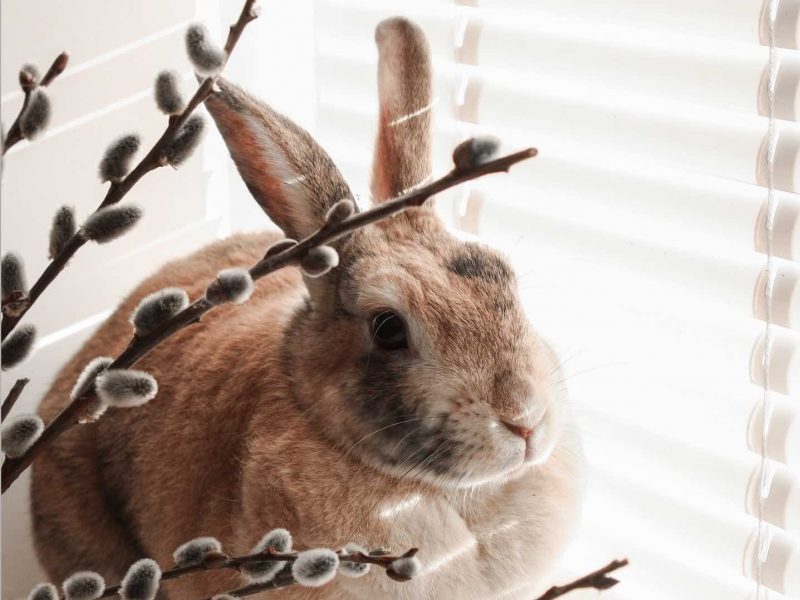
The Best Rabbit Safe Houseplants
Our furry friends are one of the most important things to us and we do everything we can to care for them. For those with house bunnies, a lot of time has been spent getting your home ready and bunny-proofed. But you might not realise that a lot of houseplants are actually toxic to bunnies, other pets and humans. For a lot of other pets, it might not be such a big deal as they aren’t always prone to eating things but a lot of bunnies have a tendency to nibble on the leaves of your plants. This is why we have made sure that these plants below won’t cause any harm to your rabbit if it happens to take a bite!

Jade Plant
Crassula ovata
Believed to bring luck, Jade Plants are one of the most popular succulent varieties. They are best known for their oval-shaped leaves and strong stems which become quite woody as they mature. These are totally bunny safe as well so you don’t need to worry about having these on low tables or surfaces where your bunny rabbit might be able to reach.
When it comes to caring for your Jade Plants, the top two things to remember is to give it a spot that gets ample sunshine throughout the day as well as making sure the potting mix has fully dried out before watering again as they are susceptible to root rot if you’re not careful. Jade Plants are quite slow growers though, so even if the environment and care routine are perfect, they may only grow a few inches per year.
Find out more in our Jade Plant care guide.
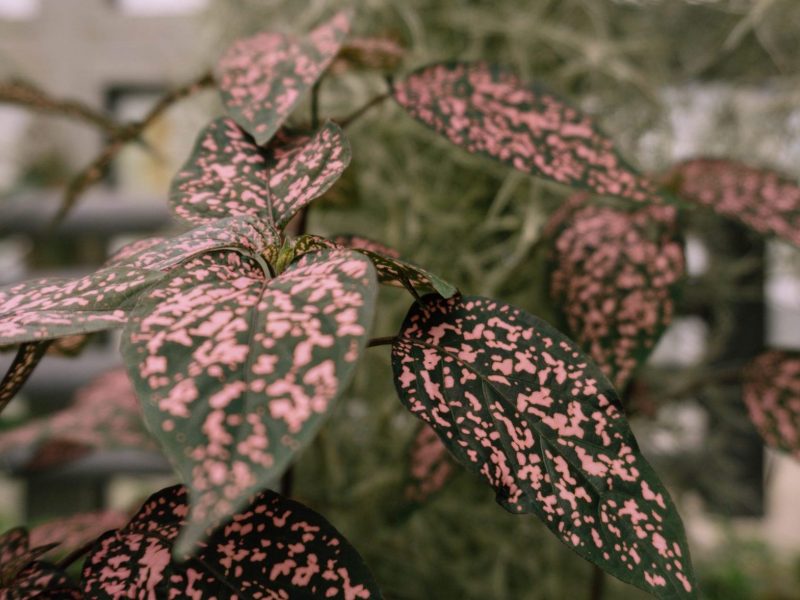
Polka Dot Plant
Hypoestes phyllostachya
Polka Dot Plants come in all kinds of colours, from pink to green, white and red. Although they have super delicate leaves, they aren’t actually too difficult to care for so long as they don’t receive any direct light (this fades and burns the leaves) and don’t have to sit in any waterlogged soil.
One great thing about Polka Dot Plants is that they can very happily adapt to a range of light levels, so if you’re looking for something to fill that shady corner of the room, you might have just found the perfect plant! They are non-toxic too which means as long as your bunny rabbit doesn’t consume a really large quantity of this plant (which it would be very hard for them to do), they’ll be absolutely fine.
If we had to sum up this plant in just one sentence it would be they are the perfect fit for someone who is looking for a little special something but who doesn’t want all the faff that can come with a lot of other houseplants!
Find out more in our Polka Dot Plant care guide.

Spider Plant
Chlorophytum comosum
Spider Plants are the perfect plant for a houseplant beginner as they are super easy to care for, grow pretty quickly, and produce an abundance of spider babies which can be propagated in seconds.
The best thing about Spider Plants (other than the face they are bunny rabbit safe of course) is that you would really have to try to kill them as they adapt to and survive in most environments and don’t mind being a little neglected. They even show you when they need more water by going quite light green. But after a little bit of water, they spring back to full health in minutes.
As your plant matures, you’ll start to see it sprouting little spiderettes which you can choose to remove from the plant to create new Spider Plants. They really are the gift that keeps on giving.
Find out more in our Spider Plant care guide.
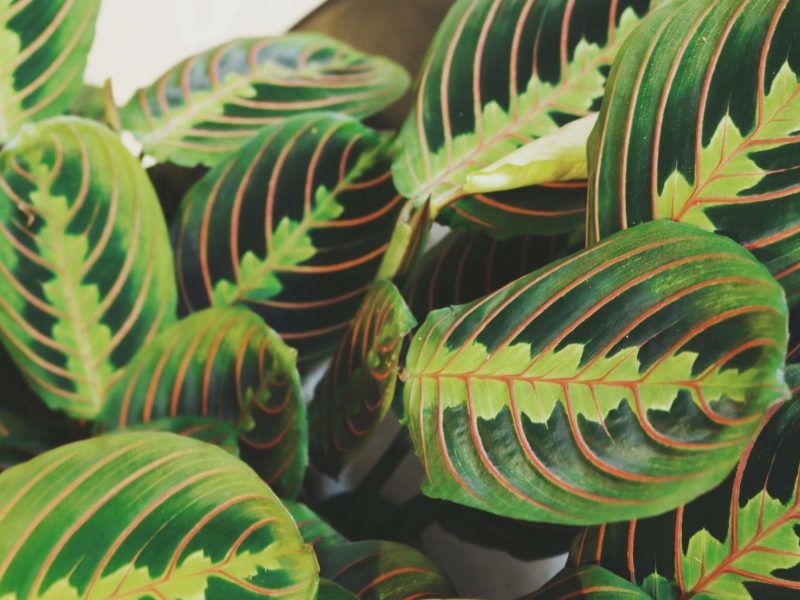
Prayer Plant
Maranta leuconeura
Native to the tropical rainforests of Brazil, the Prayer Plant is loved for its variegated leaves with intricate vein patterns. You can easily spot a Prayer Plant by its leaf undersides as shades of deep red are revealed when the plant’s leaves curl up at night, bringing a splash of colour to your home.
There are several varieties of Prayer Plants that all look ever so slightly different but all are bunny friendly. The most common is the tri-colour which has red-veined leaves but you’ll sometimes see varieties with silver patches or dark green splashes. Prayer Plants are a little fussy though with light conditions, soil moisture and humidity levels though so we don’t recommend this as a starter plant, unfortunately.
Find out more in our Prayer Plant care guide.
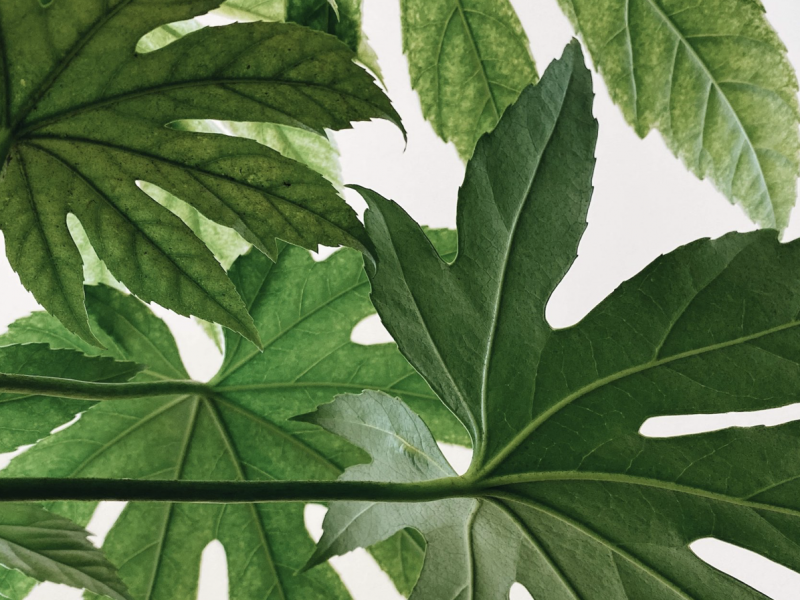
Money Tree
pachira aquatica
The Money Tree is a great tropical looking houseplant, that is actually super easy to care for and can live for 10-15 years if properly maintained. They originate from Mexico but are very common throughout the world due to their ease of care, in their natural habitats they can grow all the way to 18 meters tall!
One of the great things about the Money Tree is that they can adapt to fluorescent lighting, this makes them great for offices or other commercial spaces. With them also being safe for bunnies and simple to keep happy, we think they are a greater starter plant for budding plant parents.
Find out more in our Money Tree care guide.

Rattlesnake Plant
Calathea Lancifolia
Over the past few years, Rattlesnake Plants have gone from being quite rare to being one of the most popular Calathea plants around… and we totally understand why! Not only do they have über-cool markings on their long thin leaves, but they are quite an easy plant to take care of (as well as being rabbit friendly).
Native to the Brazilian rainforests, Rattlesnake Plants can adapt to a range of light levels, making them a great choice for those looking for a low-light plant. They also don’t need that much water as their roots absolutely hate sitting in waterlogged soil. The one thing you do need to make sure you do when caring for a Rattlesnake Plant is to boost the humidity either by misting the leaves or by using a humidifier. Even though the name sounds quite dangerous, rattlesnake Plants are completely safe for bunnies, other pets and humans too, so that’s just another reason to love them!
Find out more in our Rattlesnake Plant care guide.
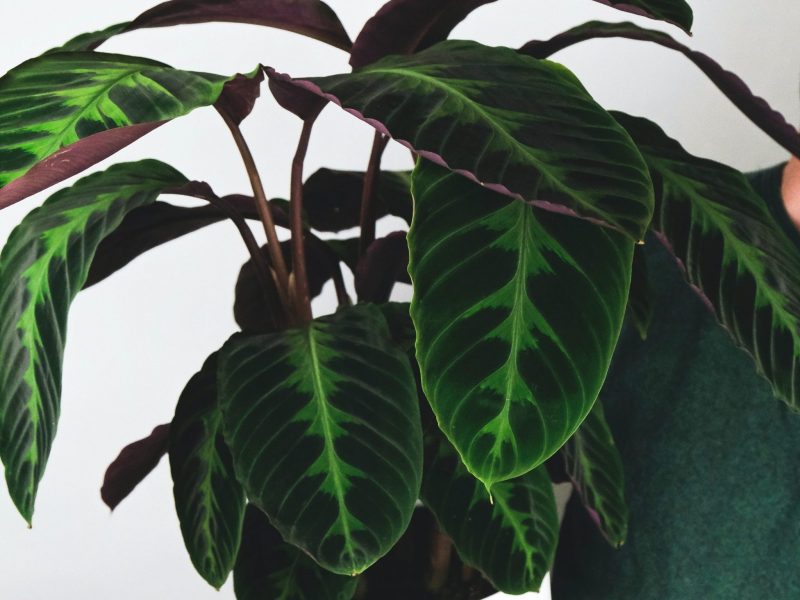
Calathea Jungle Velvet
Calathea warscewiczii
Part of the Prayer Plant family, the Jungle Velvet Calathea will really bring something special to your home! They have long elegant two-tone dark green leaves with gorgeous purple undersides. The Jungle Velvet Calathea gets its name from the soft and velvety texture of their leaves which is something very unique to this variety.
Native to Costa Rica, it can be a little tricky to replicate the native environment in your home but warm temperatures and a boost to the humidity will go a long way! And if you needed more reasons to love this plant, they are air-purifying and completely safe for bunnies and rabbits too so are great to have around the home.
Find out more in our Calathea Jungle Velvet care guide.
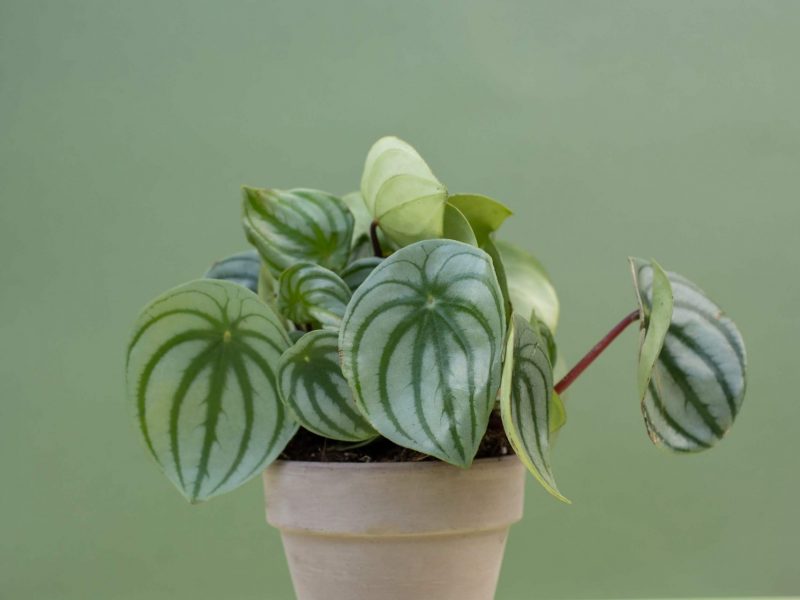
Watermelon Peperomia
Peperomia argyreia
There aren’t really many leaves that are more beautiful and striking than those of the Watermelon Peperomia. It’s not difficult to know where they got their name from, as their silvery stripes steal the hearts of plant parents everywhere.
They are quite a delicate plant though, as their large heavy leaves are held up by relatively weak stems so be prepared to lose a few leaves here and there. Another thing to be prepared for when owning this plant is all of your friends wanting a cutting, but luckily this plant is super easy to propagate so no problems there!
Native to South Africa, the bunny-friendly Watermelon Peperomia prefers mid-light levels, as they are used to the dappled conditions of the jungle floor. Oh, and as they are a semi-succulent, it’s important you don’t water this one too much or the stems can give up and the whole plant will droop and wilt.
Find out more in our Watermelon Peperomia care guide.

Ponytail Palm
Beaucarnea recurvata
This is a Palm with a personality! The Ponytail Palm is loved for its long curly leaves which instantly bring the tropical beach vibes whilst still being completely safe for your bunny to be around and eat if it likes.
Interestingly, the Ponytail Palm is neither a palm nor a tree, it’s actually a succulent which is why they are super low maintenance. All they need is a spot with ample light and warmth and they’ll be happy. They don’t need much water either as they are able to store it in their trunk. The only drawback of the Ponytail Palm is that it’s quite slow-growing so don’t expect it to be constantly growing new leaves.
Find out more in our Ponytail Palm care guide.

Lucky Bamboo
Dracaena sanderiana
Believed to bring good luck, the Lucky Bamboo is the ideal houseplant for those wanting to bring a little bit of greenery indoors, but who just don’t have the time or skill to give it much attention. The Lucky Bamboo thrives off being neglected and as long as they have enough sunlight and some warmth, they’ll happily live for a very long time. You can choose to grow them in either well-draining soil or a vase filled with water. The latter is great for forgetful waterers as there’s no risk of them drying out!
You can continue the gorgeous swirls on your Lucky Bamboo plants by simply rotating them every once in a while. The plant naturally grows towards the sunlight so you can use this to create the twists.
Find out more in our Lucky Bamboo care guide.














